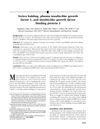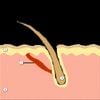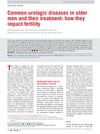Androgenetic Alopecia at Various Ages and Prostate Cancer Risk in an Equal Access Multiethnic Case Control Series of Veterans
April 2012
in “
The Journal of Urology
”

TLDR Early baldness increases prostate cancer risk, radiotherapy and surgery have similar second cancer rates, and ALA may reduce prostate cancer risk.
This document contains three studies related to prostate cancer. The first study examined the relationship between androgenetic alopecia (AA) and prostate cancer risk in a multiethnic cohort of veterans. The results showed that men reporting earlier onset of AA were at increased risk for prostate cancer and suggestively had more aggressive disease. The second study compared the incidence of second malignancy development after external-beam radiotherapy (EBRT) and brachytherapy (BRT) for prostate cancer and found that the incidence of second malignancy after prostate cancer radiotherapy was not significantly different than surgery when adjusted for age of the patient and prior smoking history. The third study conducted a meta-analysis to determine the association between dietary omega-3 and omega-6 fatty acids with prostate cancer risk from prospective studies. The results showed that high intake of alpha-linolenic acid (ALA) may reduce the risk of prostate cancer, while intake of long-chain n-3 PUFA and n-6 PUFA do not significantly affect the risk of prostate cancer.















